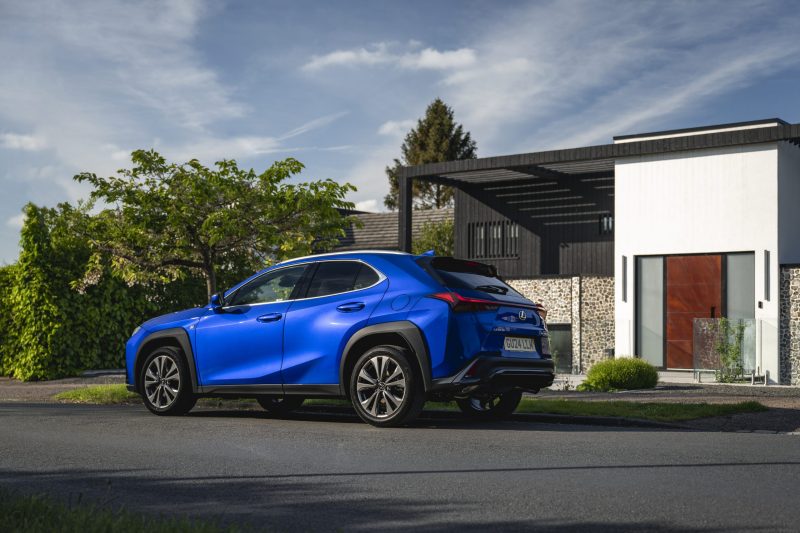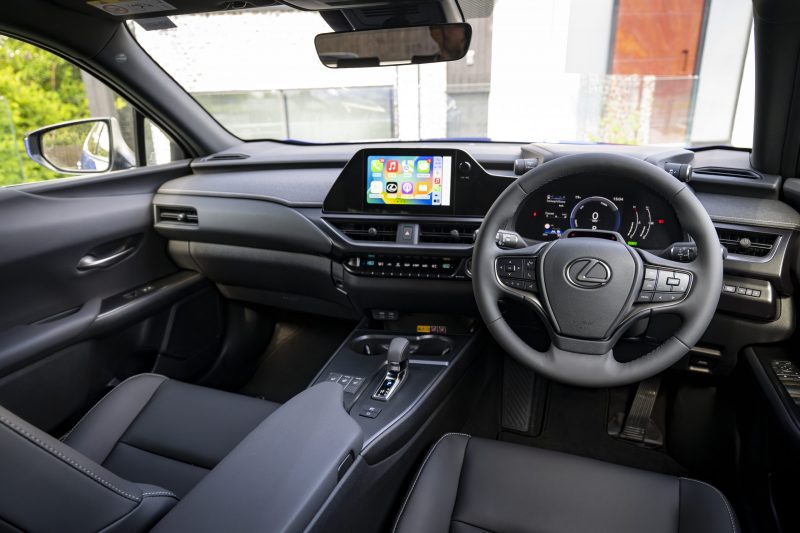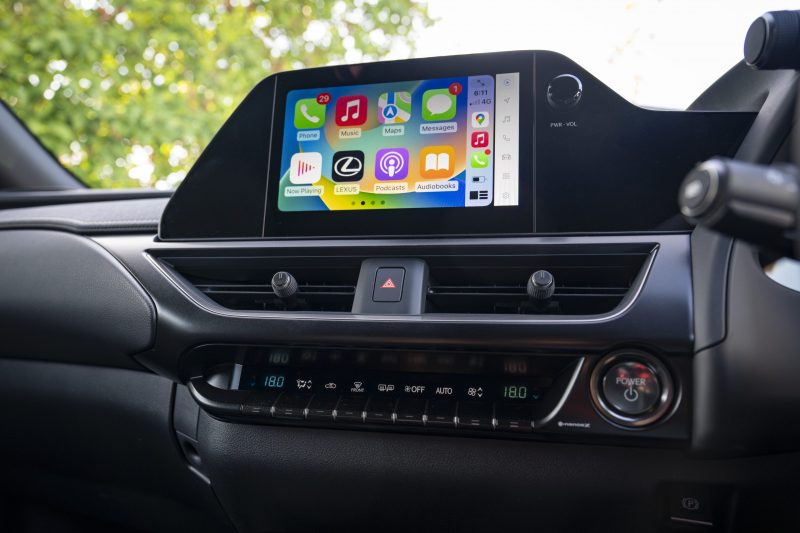The UX 250h has been around since 2018 and now Lexus has decided to update it with a bigger power unit. Cameron Richards has driven it.
What is it?

The UX is one of the Lexus’ smallest models in its vehicle line-up and since the original car’s launch six years ago, it has become a common sight on our roads.
Now for 2024, Lexus has decided to discontinue the old UX 250h, replacing it with a more powerful and cleaner UX 300h which will sit alongside the UX 300e – the firm’s first and only electric model.
What’s new?

Primarily, the UX 300h looks virtually identical to the outgoing 250 model, with the bulk of the changes going on under the skin. There is also an improved E four model that brings all-wheel-drive alongside a motor generator that produces an extra 40bhp and 84Nm of torque. It also serves as a motor for the regenerative braking to help charge the battery and boost its efficiency.
A new 12.3-inch digital driver’s display, which is available on higher specifications can be fully customisable from the type of information displayed and its appearance, too, while new exterior paint finishes such as Sonic Copper and thereto make the UX stand out even further.
What’s under the bonnet?

The UX 300h features a 2.0-litre four-cylinder petrol engine that is joined with a lithium-ion battery that now produces 196bhp and does 0-60mph in 7.9 seconds or 7.7 seconds with the all-wheel-drive E four motor. Fuel economy for the former combined is 54.3 mpg, while the latter does a claimed 49.5 mpg.
CO2 emissions are low at 117g/km for the standard car, while the all-wheel-drive model produces 126g/km.
What’s it like to drive?
Out driving the @LexusUK UX 300h today. Looks great in Azure blue! pic.twitter.com/AQrIBgOIdi
— Cameron Richards (@CamRichards13) May 17, 2024
When you drive the UX 300h it’s a typical Lexus, in the fact that it’s effortless to drive, while being smooth, quiet and comfortable. The handling is good with the car feeling planted around the corners, and the steering is nicely weighted too.
Our test car also managed an impressive 58.3mpg on a mixture of A roads and dual carriageways. Driving in EV mode makes the whole experience even more relaxing; speeds lower than 30mph can allow the car to purely run in electric mode to help boost economy and reduce emissions.
Sport mode makes the acceleration sharper and the steering slightly heavier, but it appears that Normal mode was the best blend of the two.
We also had a quick drive in the all-wheel-drive model, but struggled to notice any difference in the way the UX300h drove. That model also came with Sport+ and Custom driving modes, but again, Normal mode still gave the best of both worlds when it came to driving enjoyment and comfort.
However, when you put your foot down, the groan from the CVT gearbox is quite noisy and rear visibility is on the small side due to its sloping rear window. Furthermore, general visibility is not great due to all the thick pillars obscuring your view when reversing or pulling out at junctions.
What’s it like inside?

Lexus has always been a byword for quality and durability and the UX 300h is a lovely thing to sit in. The cabin materials are of high quality and the design of the dash, although simple, everything was logically laid out and you still have physical buttons on the steering wheel and for your climate control.
There are large door bins that can fit generously sized bottles of water, a big centre console compartment and decent-sized glove box.
The space in the back is good with an ample amount of headroom, and decent legroom, however, boot space is fairly small measuring at just 320 litres with the seats up and 1,231 litres with them down. In comparison, rivals from Germany such as the BMW X1 have 540 litres with all seats in place and extend to 1,600 litres with them folded flat.
What’s the spec like?

In terms of value for money, Lexus has always been on the generous side with standard equipment and the UX 300h does follow down that path.
The base model Urban starts from £34,895 and features 17-inch alloy wheels, a reversing camera and an eight-inch touchscreen. The Premium starts from £36,895 and offers heated front seats and steering wheel and keyless entry and start.
Our test car was the predicted best-seller, the F Sport Design, starting from £37,495 and gaining a striking F Sport exterior and interior detailing and rear privacy glass.
The F Sport Design Tech, starting from £39,395, boasts a power tailgate and the digital 12.3-inch driver’s display.
There are several trim levels to choose from in total, but flagship F Sport Takumi comes in at £50,995 and adds LED headlights with adaptive beams, head-up display and a sunroof. At this price point, the UX starts to feel quite expensive.
For an extra £1,300, the Premium Plus, F Sport, Takumi and F Sport Takumi models are available with all-wheel-drive.
Verdict

The improved UX from Lexus has made this small crossover an even more tempting proposition. It’s got more power while maintaining an engaging drive and offering the chance of great fuel savings.
Rivals from Europe are still more practical in areas, but they don’t hold the same quality or durability as the Lexus and with plenty of trim levels to choose from, there is no shortage of options when it comes to specifications.
The UX 300h should certainly be on your shopping list if you’re looking for a compact crossover that delivers impressive driving credentials with low running costs.
Facts at a glance
Model as tested: Lexus UX 300h F Sport Design
Price as tested: £37,495
Engine: 2.0-litre petrol hybrid
Power: 196bhp
Top speed: 110mph
Torque: 190Nm
0-60mph: 7.9 seconds
MPG: 58.3
CO2 emissions: 117g/km
By Cameron Richards

